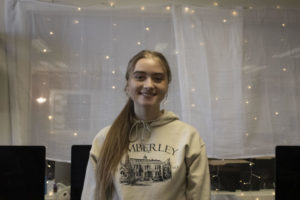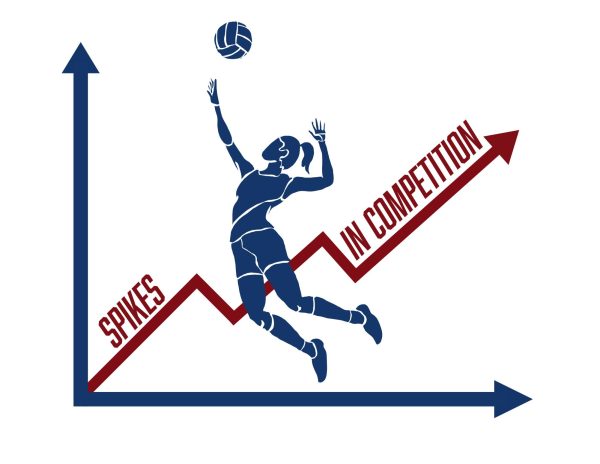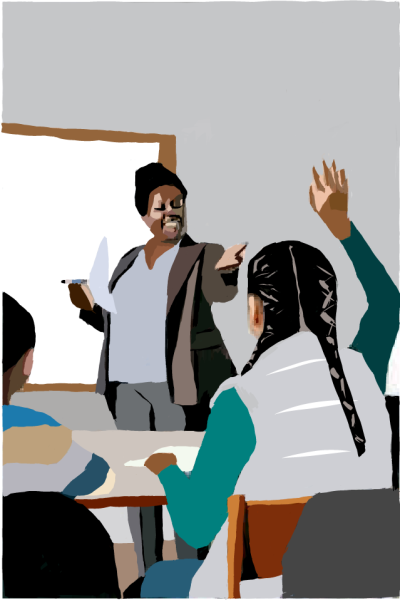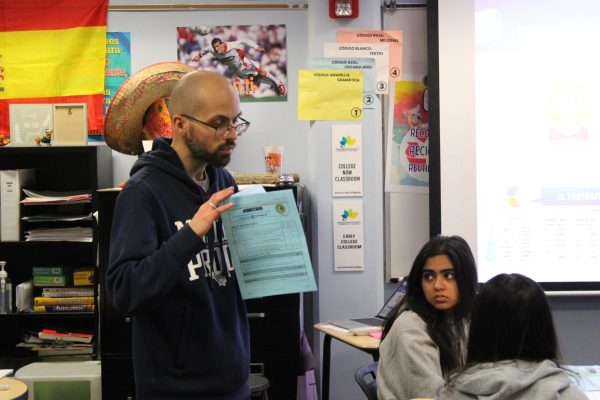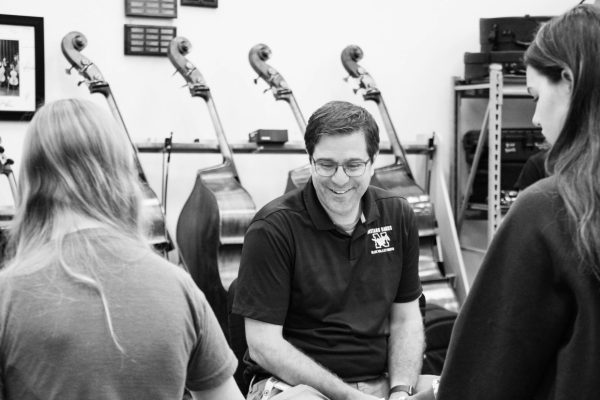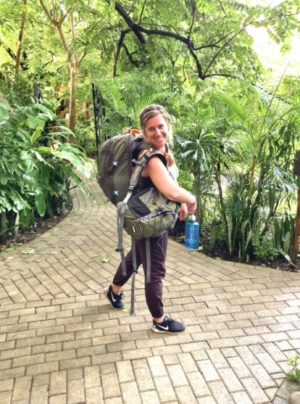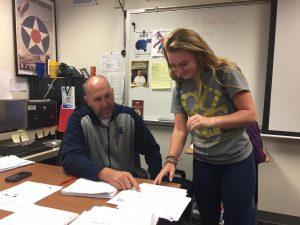BVN Back in Time
Photo by Madisyn Stogsdill
Red carpet, plastic plants, and students wearing head-to-toe vibrant colors. Such a description may not mimic BVN’s present-day commons, but according to Principal Tyson Ostroski and long-serving teachers, it was the sight of the school’s earliest of days. While students may only be at their high school for a few years at a time, teachers are the ones left to observe the changes both in the building as well as its curriculum.
“Most changes happen in the school simply because we just outgrow it. When BVN first opened, it was the second high school in the district,” Dr. Ostroski said. “At that time in this area, there were no Metcalf businesses or neighborhoods around here. So I think the school was just busting at the seams and needed more space for office staff, counselors and all that kind of stuff.”
The longest-serving member of staff at BVN, Kathy Deitz, agrees with the increase in students.
“As for the curriculum, I don’t know much about it, but there used to only be a few Blue Valley Schools and we were one of the first. I started working here around the second semester after we opened and haven’t left,” said Deitz.
Growth of attendance naturally led to the growth of problems and for the Blue Valley School District, the only way to solve it was through more money. Even today, allocating funds for new advancements are constantly occurring, but Dr. Ostroski notes that the majority of renovations were to purely accompany the different amounts and backgrounds of people enrolling. But the administration soon realized that extra cash could only impact the building itself, and not the land that it was on.
“I love how the campus and its classes have changed. It’s a challenge for us because we’re not like other Blue Valley schools, we don’t have a ton of space around us. We’re kind of landlocked within a neighborhood which is really cool, but it also confines you in some areas,” Dr. Ostroski said. “We have to continually maximize what we have, so we took out the lockers in the flex space that were there when the school first opened, and there was also carpet in the commons along with fake plants. The goal has been to open up the school so we have more space for learning outside the classroom and just hanging out.”
Opening in 1984, the trends of the school were extremely different from what is currently adopted. Upon reports by the principal and even old video footage of the school, the placement of its property initially limited it to a small building with few entrances, leading to the front office previously taking place in what is now for the counselors. Aside from rearranging the staff, the same happened to the students, with there only being a single theatre and no blue-lit hallways. These modern advancements accompanied the society around the school, but also the advancements of the minds inside it.
“We’ve had a lot of life things that have happened, like COVID. Students of today are very different than the students of 20 years, 10 years, or two years ago So it requires us to have different approaches to how we reach them. We’ve increased access to mental health resources, and things that weren’t really on the forefront of people’s minds decades ago,” Dr. Ostroski said.
Similarly, Deitz discusses how her approach to associating with students has grown as well. Since her role in the school is not as a teacher, many assume that she is not very involved with the students. But while seeing them every single day as they get their lunches and have passerby conversations, Deitz admits it means something to them in a way that their classroom could never replace. Human connection.
“I’ve stayed here so long because of the students. Lunch ladies are trained to say at least one thing to someone as they pass by, like saying hi or asking about their day because that might be the only thing that is said to them that day. Seeing the seniors graduate every year is so sad because we know them for so long and then they just move on. We really care about them.”
As the school’s atmosphere changed throughout its history, a technological approach to education eliminated made it change even more. Being crafted over the course of several decades, it was time for the staff to find yet another new approach to change, and not just via constructional appearances. Priorities shifted from how the students felt inside the hallways to how they felt in their own heads, leading to mental health initiatives and increased support from counselors. As students started to return to seek education in person, Dr. Ostroski discusses his opinion of balancing these newfound advancements.
“We have the new aux gym and I want to continue projects like that. We’re looking at really renovating our performing arts area in this next bond that’s in the process of getting approved. So, I’m all about change. If you don’t change then you’re going to have a very stagnant environment and community and that’s not beneficial for anyone,” said Dr. Ostroski.
Rising from a desolate patch of land into a nationally recognized educational institution, BVN has endured countless advancements to get it to where it is now. With administration seeking a balance of both building and classroom priorities to sustain that. Change in virtually all areas of the school is encouraged, whether by the administration, or the newest of students.




